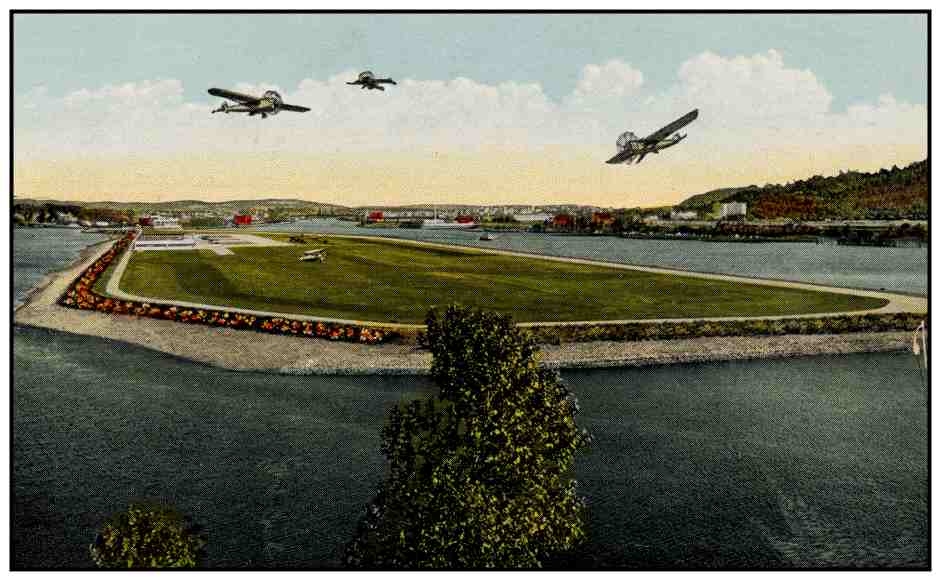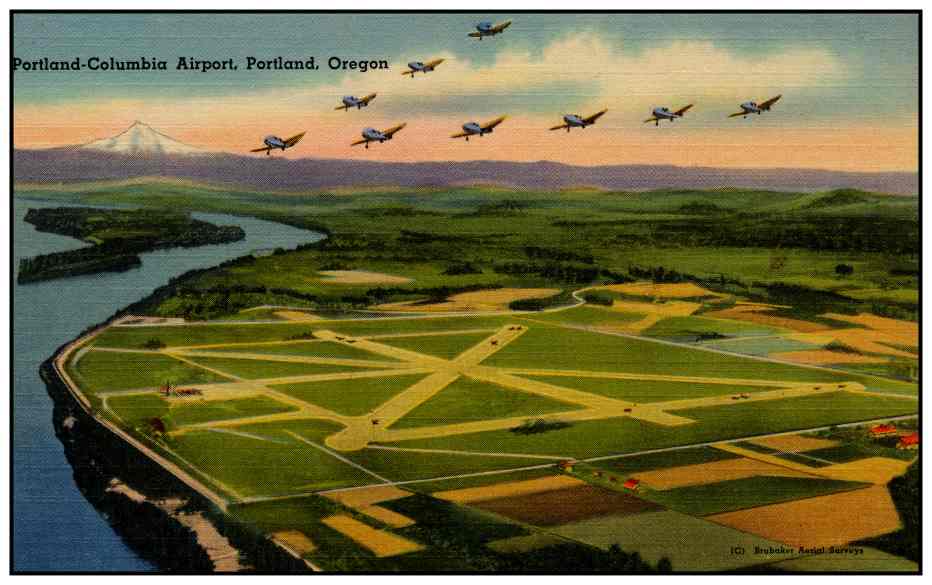




 |
 |
 |
 |
|||
 |
||||||
|
|
||||||||||||||||||||||||||||||||||||||||||||||||||||||||||||||||||||||||||||||||||||
|
Throngs of people watch from the rooftop of the new Portland-Columbia Airport as a plane takes off in 1940. |
|
|
Portland’s first airmail plane flight from Portland to Vancouver, Washington in 1912. |
|
As the nation became obsessed with flying, landing strips dotted Portland’s landscape in 1925 when the City of Portland asked the Port of Portland to build Portland’s first commercial airport on Swan Island. City leaders wanted to increase tourism and to enter into the competitive aviation industry. Swan Island was centrally located and it had flat land that was considered ideal for a travel hub in Portland. The Port owned the land which gave them access to public grants, subsidies and user fees. Construction on the Swan Island Airport began in 1926, but the facility wasn’t fully operational until 1928. However, after Charles Lindbergh set a new transcontinental record, he flew his “Spirit of St. Louis” into the airport on Swan Island on September 14, 1927 to dedicate the new airport. Hundreds of local residents lined up along the airstrip to greet Lindbergh. |
|
|
Charles Lindbergh flew his Spirit of St. Louis into the Portland Swan Island Airport on September 14, 1927. |
|
|
Planes on the Tarmac and field at Portland Airport on Swan Island about 1930. |
 |
|
View of the Swan Island Airport showing the driveway that encircled the island. The outer edge was landscaped with Scotch Broom and Rose Bushes. |
|||
|
Thousands of passengers and an abundance of cargo helped the Swan Island Airport to quickly reach its capacity and weekend crowds overwhelmed the Island when they came to see thrilling performances by Oregon’s earliest wing-walkers and stunt pilots. As the nation’s enthusiasm for aviation expanded into manufacturing, larger and faster airplanes took to the skies. In 1935, the U.S. Bureau of Air Commerce denied authorization for the most modern aircraft, the DC-3 Mainliner, to operate out of Swan Island. As a result, the Port of Portland announced that it would begin building a “super airport.” The new Portland-Columbia Airport took four years to build and it had a price tag of nearly three million dollars. The airport was situated on a 700-acre parcel known as the Columbia bottoms near the Columbia River. The Portland-Columbia Airport was one of the largest Roosevelt-era work projects in the nation. It was heralded as one of the nation’s most well-planned airports with plenty of room for expansion. |
|||
|
|
The new Portland-Columbia Airport was dedicated on October 13, 1940 when a crowd of thousands came to see the DC-3 Mainliners that put the Swan Island Airport out of business. |
 |
|
Planes fly in formation over the Portland-Columbia Airport. |
|
With the completion of a new 8,800-foot runway capable of handling international flights, the Portland-Columbia Airport was renamed to Portland International Airport (PDX) in 1951. Since its inception, the airport has gone through numerous expansion projects and it has more than doubled in size. In the 1960s, the airport moved into a new building a little further to the east. |
|
Last updated 10-24-16 |
|||
|
copyright © 2017 PdxHistory.com |